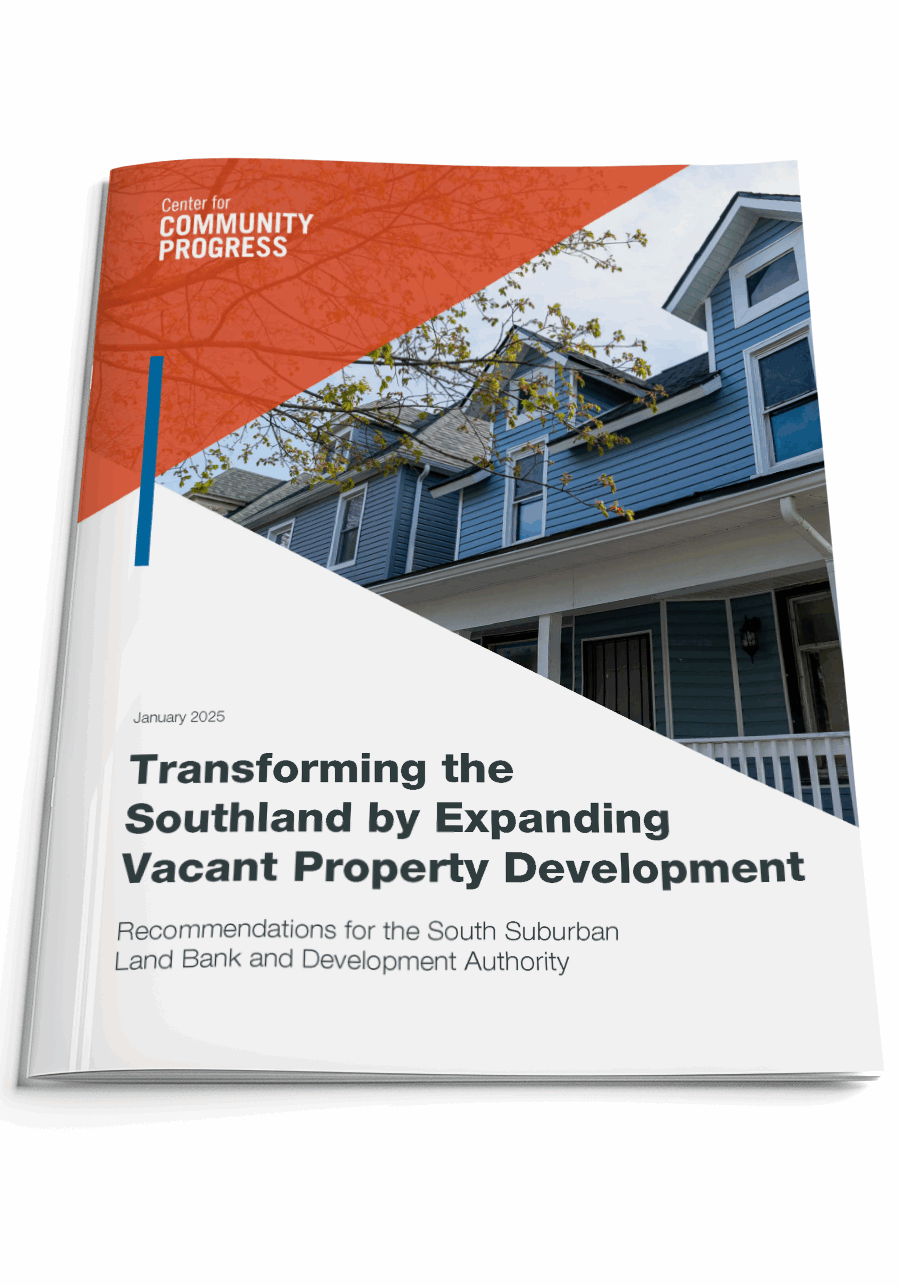Transforming the Southland by Expanding Vacant Property Development
Recommendations for the South Suburban Land Bank and Development Authority
Topic(s): Land Banks
Published: January 2025
Geography: Illinois
Executive Summary
Founded in 2012 as the first land bank in Illinois, the South Suburban Land Bank and Development Authority (SSLBDA) serves nearly 30 municipalities throughout the south suburbs of Chicago, Illinois—a region referred to locally as the “Southland.” As a quasi-governmental entity, SSLBDA relies on powers and authority granted to it by state law and intergovernmental agreements with its partner municipalities (often referred to as land bank “member municipalities”) to acquire and redevelop vacant and abandoned properties to boost the economic vitality of Chicago’s south suburbs.
Over the past two years, SSLBDA focused on rebuilding its operational capacity, reputation, and relationships with its member municipalities. The hiring of a new executive director and execution of a partnership and staffing agreement with the Southland Development Authority (SDA) in 2021 were instrumental in this rebuilding phase.
With this foundation-building work now in place, SSLBDA also has its sights set on furthering its evolution in support of the goals and priorities of the communities it serves, including by expanding its direct role in the development of SSLBDA inventory. While SSLBDA has the opportunity to transform vacant properties across the Southland to meet a range of housing and commercial needs, it has focused recent efforts on piloting the rehabilitation of vacant property into single-family housing opportunities at or below $200,000. This price point is critical, as it is affordable to many in the region and home prices in the land bank’s service area continue to creep upwards. Homes available at this price are important to attract first-time homebuyers looking to take advantage of the economic opportunities the region offers.
To that end, SSLBDA engaged the Center for Community Progress’ technical assistance services in August 2024 to improve strategic development outcomes of the land bank’s inventory, with a primary focus on increasing the supply of quality housing at an affordable price point through the rehabilitation of abandoned homes, and to a lesser extent, new construction on vacant lots.
Through this work, we concluded that:
- There is a clear role for SSLBDA in the creation of housing at $200,000 or less. SSLBDA has demonstrated that it can play a critical role in getting single-family housing rehabbed and back to market, often at a price point that is affordable to most in the Southland ($125,000-$200,000). By leveraging its municipal partners’ acquisition powers, a fairly robust housing market, and available state funding, SSLBDA not only meets this housing market need but also generates revenue that supports operations and expanded programming. Given these outcomes, more investment in rehab and new construction is warranted. To illustrate, SSLBDA generated nearly $1.8 million in revenue from almost 50 property sales in 2024 and is projecting nearly $3 million in revenue in 2025. Much of that was from sales that ultimately resulted in home purchase of $200,000 or less. Finding a way to properly invest that revenue by formalizing the pilot in-house rehab program is a logical next step. This would give SSLBDA greater control to ensure these properties get to market at the desired price point and enable the land bank to better cultivate and expand the pool of qualified, capable contractors in the Southland. Now is the time to establish a full SSLBDA rehab program and explore how lessons learned from these demonstration efforts can be applied to a new construction pilot program, support its expansion, and capacity of local contractor and developer partners, and other related initiatives.
- Mission alignment, data, and community needs must drive program expansion and program goals. The major components of any expanded or new programming should be aligned with the land bank’s mission, data regarding housing supply and current and prospective inventory, and feedback from residents in the community on their housing needs. Land banks were created to be unique public entities that are flexible, mission-driven, and transformative in revitalizing communities. Revisiting the mission of SSLBDA and ensuring there is alignment with these ambitious new or expanded program goals is essential to ensuring its unique yet complementary role. Collecting and analyzing data with its municipal partners in the following categories will also be instrumental in program design:
- Housing supply and need (e.g., clarifying the scale and need for housing for families earning < 80 percent AMI),
- Vacant or abandoned properties (e.g., abandonment pipeline), and
- Prospective inventory (e.g., tax foreclosure, direct market, donations).
- While quantitative data is important, there is no substitute for engaging directly with residents on their housing wants and needs, as well as interest in workforce development opportunities to be part of this pool of contractors.
- There is a need to revisit the current agreement between SSLBDA and SDA to ensure mutual, sustained success. With the evolution of any land bank, it is critical to consistently monitor the trajectory of the organization and revise or expand on the partnerships, resources, and authority needed to achieve its mission and goals. SSLBDA’s relationship with SDA, for example, is a critical one to assess given how closely staff and finances are intertwined. SDA has and will continue to be an essential partner to SSLBDA, noting the land bank would not be where it is without the support provided by SDA via the 2021 staffing and partnership agreement. SSLBDA’s recent success merits thoughtful conversation about how the two organizations can more clearly define the parameters of their partnership and focus on explicitly carving out and piloting the specific types of transformative projects that will enhance economic and housing opportunities in the region.
- More partnerships with municipalities, contractors, and community-based organizations are required to scale up development role and create successful homeownership opportunities. As SSLBDA refines programmatic goals, acknowledging its struggles to build meaningful partnerships in communities where resources are scarce is important. Some municipalities with the greatest need for rehabbed or new housing, for example, lack the data to assess potential SSLBDA acquisitions, or the code enforcement capacity and resources to help facilitate SSLBDA acquisitions via the “abandonment” process in state law. Quality, capable contractors are always scarce, and emerging Southland developers could significantly benefit from increased training and other opportunities to work closely with SSLBDA and its partners. In many cases, this will require SSLBDA to dedicate staff time and resources to bridging those capacity gaps by, for example, exploring how SSLBDA and its municipal partners could provide data and/or code enforcement resources and training to municipalities most in need of SSLBDA services, or by developing quarterly meetings/trainings for emerging and established SSLBDA contractors and developers. In addition, partnering with community-based organizations to work with residents to become financially ready to become successful homeowners is a key piece to SSLBDA’s success moving forward.
- Increased access to capital is key to pursuing mission-driven work and will allow SSLBDA the flexibility to make choices on where and how to invest its resources based on need and outcome, rather than relying entirely on program revenue. Trusted funding partners and institutions like Community Development Financial Institutions (CDFIs), for example, can be a key partner to helping address racial wealth and homeownership gaps throughout the country. These partners are often far more willing to take additional lending and other financial risks to meet the needs of individuals, families, contractors, and investors looking to purchase and develop properties from the land bank.

Topic(s): Land Banks
Published: January 2025
Geography: Illinois
Related Publications
Other Related Content
Subscribe to join 14,000 community development leaders getting the latest resources from top experts on vacant property revitalization.
